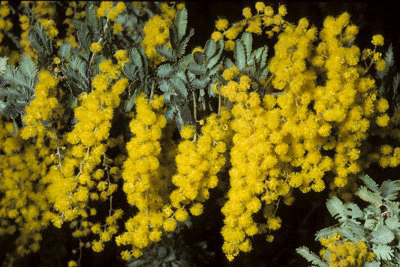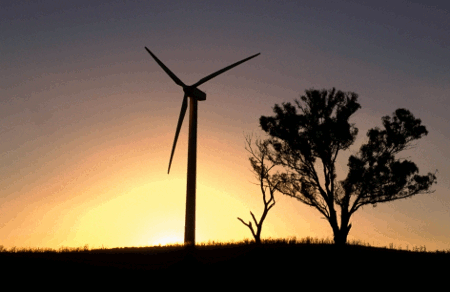
|
Published: 12 September 2011
Climatic tolerances: an Australian story
How will Australia’s native species survive climate change? Observed distributions are the main source of information drawn upon to answer this question, but they need to be interpreted cautiously. In particular, we need to put aside assumptions based on northern hemisphere evidence.
In modelling studies, a species’ climatic needs are inferred from its distribution. A bird found only on cool wet mountains, for example, is expected to need a cool wet climate in future.
But, ecologists know that distributions often fall short of indicating climatic limits. For example, rabbits, foxes and hares occupy much hotter and drier places in Australia than their native ranges would suggest. Australian garden plants sometimes escape into the wild in regions warmer than those they come from,1 and plants grown for experimental purposes often thrive at elevated temperatures.2–4 Fossil and genetic evidence implies that many Australian species did not change their distributions in direct proportion to Pleistocene climate change.5–7
Species distributions in very cold regions show the influence of climate more strongly than distributions nearer the equator;8, 9 the harsher the climate, the stronger the climatic influence. In Australia, with its generally mild to warm climate, there is evidence that some limits are set by competition, fire, substrate, physical barriers such as deserts, and failure to disperse far from past refuges.
For example, the tooth-billed bowerbird (Scenopoeetes dentirostris) – which is confined to high altitudes of the wet tropics – is widely expected to retreat upslope if its habitat becomes hotter. But a leading expert on bowerbirds, Clifford Frith, has suggested that the lower limits of its distribution may be set not by summer heat, but by competition from metallic starlings (Aplornis metallica). The starlings spend summer in the north Queensland lowlands, retreating to New Guinea in winter. Should climate change reduce their numbers, e.g. by reducing their food supplies in New Guinea, the bowerbird might not retreat in the way expected.
Botanists the world over worry about alpine plants: not so much because mountains will become too hot for them, but because trees will creep upwards beyond existing lower altitude distributions. Transplant experiments show that most alpine plants can live in hotter places than their distributions suggest; it is competition from trees that limits their lower ranges.10 Many plants might be saved if invading trees are removed. Climate change adaptation should, in this situation, become vegetation management: a matter of stopping climate ‘winners’ from replacing ‘losers’.
Climate models predict a poor future for the golden bowerbird (Amblyornis newtonianus), another bird of Australia’s tropical upland rainforests.11 However, one study found that bird abundance in upland rainforests reflects the severity of the dry season, which probably restricts food availability.12 Replanting mountain slopes with rainforest trees that bear fruit in the dry season could improve the bowerbird’s prospects under climate change. Adaptation would again be about managing plants: this time by adding them to the landscape.
Australia has thousands upon thousands of plants and animals with very small ranges. They could face serious risks from climate change; but in truth, we know too little about most species to rank the various threats they may face.
When assessing these species, we should not be governed by thinking generated in the northern hemisphere, where ecosystems are so different. Examples of animals and plants responding to climate change come mainly from cold regions of Europe and North America,13 and may prove uninformative for Australia.
We should consider what is distinctive about Australia, and factor that into our thinking. A drying, fire-prone landscape with infertile soils helps explain why we have so many species with small and climatically incoherent distributions, and how they might be managed. Better fire management is an obvious need, but climate change is also a reason to invest more in controlling flammable weeds, conserving pollinators, and researching fire, soil attributes and vegetation succession. We need a uniquely Australian perspective on climate change biology to help our adaptation toolkit grow.
Tim Low is a biologist and author who has written several reports about climate change and biodiversity, including a recent major report for the Queensland Government: Climate Change and Terrestrial Biodiversity in Queensland
1 Low T (2011). Climate Change and Terrestrial Biodiversity in Queensland, Brisbane: Department of Environment and Resource Management, Queensland Government.
2 Saxe H, Cannell MGR, Johnsen B, Ryan MG and Vourlitis G (2001). Tree and forest functioning in response to global warming. New Phytologist 149, 369–99.
3 Loehle C (1998). Height growth rate tradeoffs determine northern and southern range limits for trees. Journal of Biogeography 25, 735–42.
4 Ghannoum O, Phillips NG, Conroy JP, Smith RA, Attard RD, Woodfield R, Logan BA, Lewis JD and Tissue DT (2010). Exposure to preindustrial, current and future atmospheric CO2 and temperature differentially affects growth and photosynthesis in Eucalyptus. Global Change Biology 16, 303–19.
5 Markgraf V and McGlone M (2005). Southern temperate ecosystem responses. In Climate Change and Biodiversity. (Eds T Lovejoy and L Hannah) pp. 142–56. New Haven, Yale University.
6 Harrison SP and Goni MFS (2010).Global patterns of vegetation response to millennial-scale variability and rapid climate change during the last glacial period. Quaternary Science Reviews 29, 2957–80.
7 Byrne M (2009). Did Australian species stay or move when climate changed in the past? In Australia’s Biodiversity and Climate Change. (Eds W Steffen, AA Burbidge, L Hughes, R Kitching, D Lindenmayer, W Musgrave, M Stafford Smith and PA Werner) p. 93. Melbourne, CSIRO.
8 Araujo MB and Luoto M (2007). The importance of biotic interactions for modelling species distributions under climate change. Global Ecology and Biogeography 16, 743–53.
9 Woodward FI (1988). Temperature and the distribution of plant species. In Plants and Temperature. (Eds SP Long and FI Woodward) Cambridge, The Company of Biologists Limited.
10 Engler R et al. (2011). 21st century climate change threatens mountain flora unequally across Europe. Global Change Biology 17, 2330–41.
11 Hilbert DW, Bradford M, Parker T and Westcott DA (2004). Golden bowerbird (Prionodura newtonia) habitat in past, present and future climates: predicted extinction of a vertebrate in tropical highlands due to global warming. Biological Conservation 116, 367–77.
12 Williams SE and Middleton J (2008). Climatic seasonality, resource bottlenecks, and abundance of rainforest birds: implications for global climate change. Diversity and Distributions 14, 69–77.
13 Parmesan C (2006). Ecological and evolutionary responses to recent climate change. Annual Review of Ecology Evolution and Systematics 37, 637–69.




